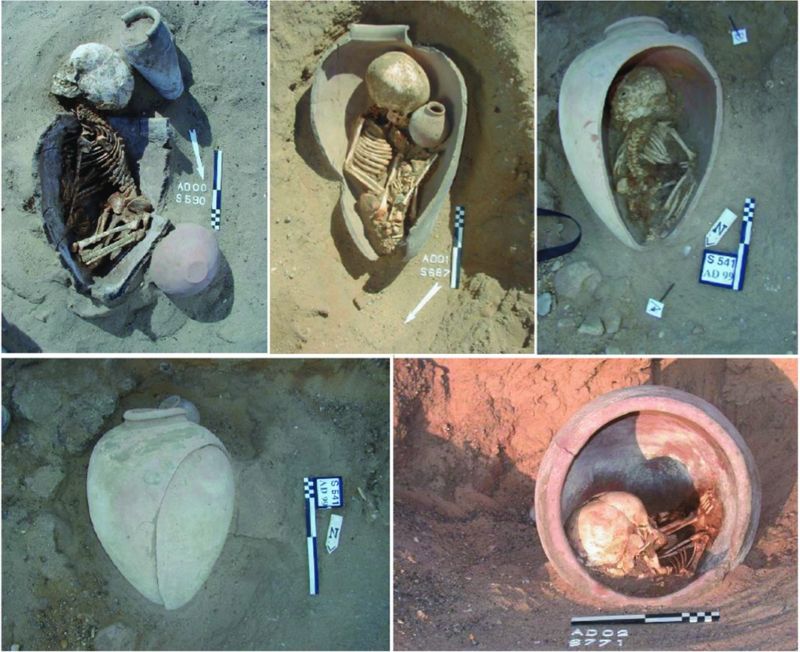Clay Vessels of the Afterlife: Deciphering the Significance of Ancient Egyptian Burials in Ceramic Jars

Around 3,500 BCE, the ancient Egyptians began to practice a ritual that has long perplexed archaeologists. They buried their dead in recycled ceramic food jars similar to Greek amphorae.
For decades, scholars believed that only the poor used these large storage containers, and they did so out of necessity. But in a recent article for the journal Antiquity, Ronika Power and Yann Tristant debunk that idea. They offer a new perspective on pot burial.
Burial in pots took many forms. Egyptians buried their dead in all types of ceramic vessels, and, sometimes, the body was simply placed underneath a pot in a grave. Though pot burials were popular, especially for children, people also used coffins and even stone-lined pits to inter their loved ones. The practice of pot burial probably came to Egypt from the Levant region, where pot burials date back to at least 2,000 years before the first known examples in Egypt.
Getting out of a modern mindset
Because ancient Egyptians had such a range of burial practices, archaeologists believed that they chose pot burial because they didn’t have enough money to buy a proper wooden coffin. Instead, they recycled a food storage jar to make a pauper’s grave. But researchers Power and Tristant write in their paper that this is a misinterpretation of the evidence, based on contemporary notions of propriety. “Pots were deliberately selected and reused as funerary containers for what may have been a variety of pragmatic and symbolic reasons,” they write. “Recycling was an essential component of ancient economic and technological sustainability and does not necessarily represent a diminishment of ‘value.’”
Unlike contemporary people, ancient Egyptians neither threw away food containers after using them nor did they see a “used pot” as something of lesser value. Indeed, a well-used pot may have taken on ritual value as the family treasured it over time—especially when you consider that the food items stored inside represented prosperity. Burying someone in a pot may have been a way to maintain a connection between the family’s everyday life and the dead. Plus, ceramic vessels preserve their contents far better than wood and thus serve to protect the body of a loved one. In other words, there are many reasons other than poverty that might have led people to recycle their food jars as burial vessels.
The pot, the womb, the egg
Ancient Egyptians also saw a symbolic connection between pots and wombs. There are examples of hieroglyphs where the word for “pot” is used to mean “womb.” Because Egyptians believed that death led to a rebirth in the spirit world, interring people in a vessel associated with birth makes sense.
The dancers in this engraving above say, “But see, the secret of birth! Oh pull! See the pot, remove what is in it! See, the secret of the ḫnrt [prison], Oh Four! Come! Pull! It is today! Hurry! Hurry! See [… ] it is the abomination of birth.”
In addition, evidence suggests that ceramic pots were thought to represent eggs. Power and Tristant write:
Adding weight to this idea is the fact that many burial pots have been intentionally cracked or pierced once the body is inside. The researchers muse that this is “possibly… a way of breaking the ‘egg shell’ and enabling rebirth.”
Though modern people might not consider a recycled food jar an appropriate burial vessel, that’s because our cultural frame of reference is dramatically different from the ancient Egyptians. In their world, a sturdy ceramic pot was not something disposable to be tossed aside after use. Food jars were more than just fancy Tupperware. Ceramics would have called to mind images of wombs and eggs. And these, in turn, were symbols torn from the great cycle of death and rebirth that turned every burial into a chance at new life.










